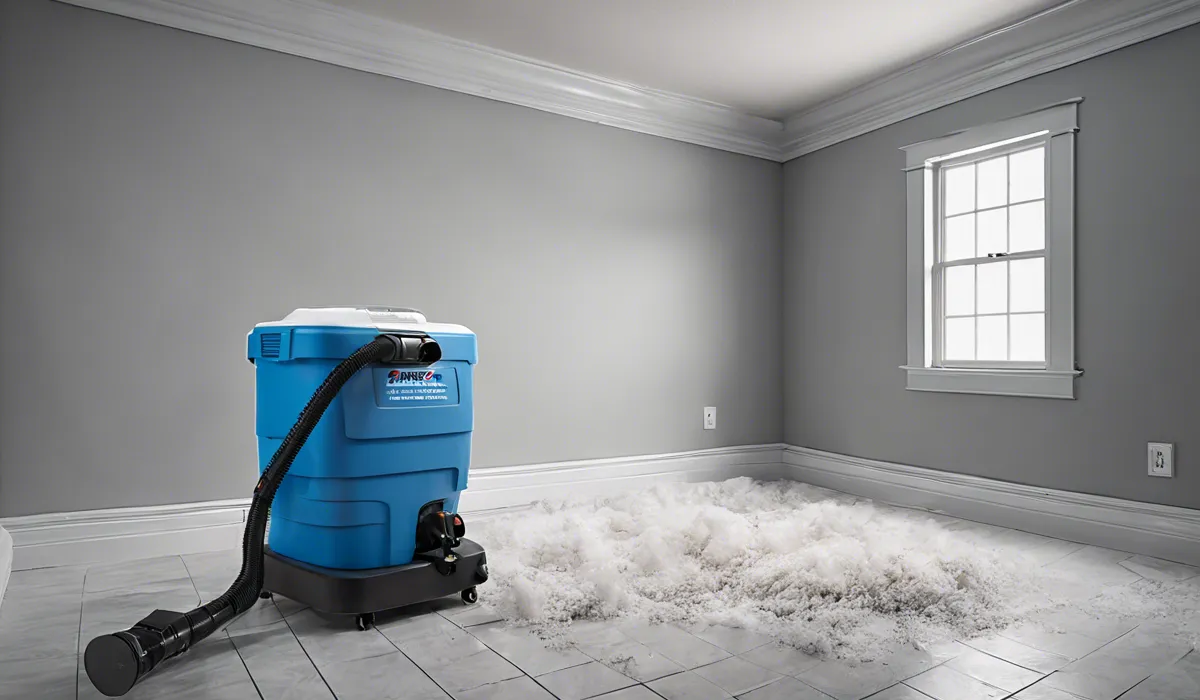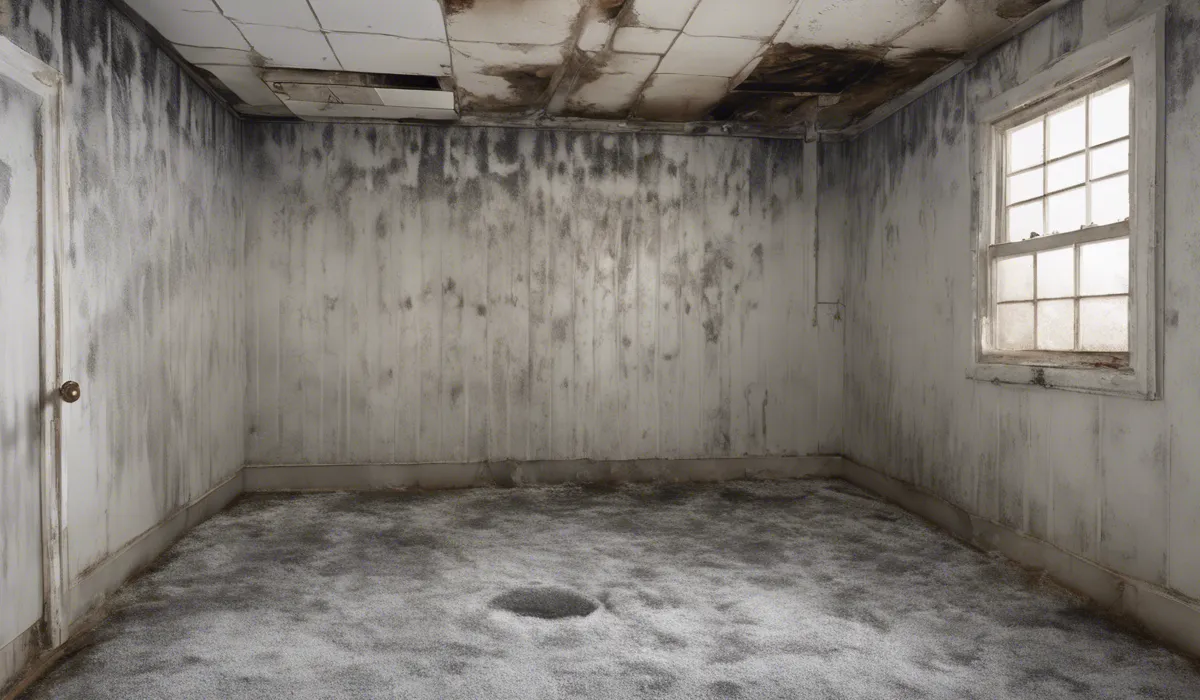To use an air scrubber for mold, first, position the device in the affected area. Ensure it operates at full capacity for optimal filtration. Replace filters as recommended by the manufacturer to maintain effectiveness. Run continuously until mold levels are significantly reduced.
Understanding Air Scrubbers and Mold Remediation

Explanation of What an Air Scrubber Is
An air scrubber is a portable filtration system that removes particles, gases, and chemicals from the air within a given area.
These machines draw in air from the surrounding environment, pass it through a series of filters, and expel clean air back into the space.
Air scrubbers are essential in environments where air quality is compromised, such as areas with mold infestation.
The Role of Air Scrubbers in Mold Remediation
In the fight against mold, air scrubbers play a crucial role by capturing airborne mold spores that can spread and cause health issues.
By removing these spores from the air, air scrubbers prevent them from settling and growing on new surfaces, thereby aiding in the mold remediation process.
Types of Air Scrubbers Commonly Used for Mold
There are several types of air scrubbers, but those equipped with HEPA filters are most effective against mold.
These high-efficiency particulate air (HEPA) filters can trap extremely small particles, including mold spores, ensuring that the air is significantly cleaner when released.
How Air Scrubbers Work to Capture Mold Spores?
Air scrubbers use a fan to pull air through several layers of filtration. As the air moves through these filters, mold spores are trapped and contained.
This process not only cleans the air but also helps to limit the spread of mold to other areas.
Importance of HEPA Filters in Removing Mold from the Air
HEPA filters are critical in mold remediation because they can capture particles as small as 0.3 microns with a 99.97% efficiency.
This capability is essential for trapping mold spores, which can vary in size but often fall within this range.
Using HEPA filters ensures that the air scrubber is effectively reducing the mold spore count in the air.
Setting Up an Air Scrubber for Mold Removal

Selecting the Right Size and Type of Air Scrubber for the Space
Choosing an air scrubber that matches the size of the space is crucial for effective mold remediation.
A unit that is too small will not adequately clean the air, while a larger one may be unnecessarily expensive.
It’s important to calculate the cubic footage of the area and select an air scrubber designed for that space.
Preparing the Area Before Placing the Air Scrubber
Before installing an air scrubber, remove excess water and fix any leaks to prevent further mold growth.
Ensure that the area is sealed off from other parts of the building to avoid cross-contamination.
Step-by-Step Guide to Installing the Air Scrubber
Once the area is prepped, position the air scrubber strategically. Plug the unit into a power source and turn it on, making sure it operates at full capacity for optimal performance.
Monitor the system to ensure it runs continuously until mold levels are significantly reduced.
Proper Placement for Maximum Efficiency
Place the air scrubber in a location where it can pull in the most contaminated air, which is typically close to the mold source.
Ensure that the exhaust is directed away from the area to prevent the spread of mold spores.
Tips on Maintaining Negative Air Pressure
To prevent contaminated air from escaping the remediation area, maintain negative air pressure using the air scrubber.
This involves adjusting the air flow so that more air is being removed from the space than is being brought in, thereby ensuring that any mold spores are contained within the remediation zone.
Best Practices for Using Air Scrubbers in Mold Remediation

Duration of Use for Effective Mold Spore Removal
For air scrubbers to be effective in removing mold spores, they need to be run continuously for a substantial period.
The time required can vary depending on the severity of the mold problem, but generally, a minimum of 24 to 48 hours of operation is recommended.
Cleaning and Replacing Filters Regularly
Filters within air scrubbers need to be checked and cleaned or replaced regularly to maintain effectiveness.
Follow the manufacturer’s recommendations for filter maintenance to ensure the unit continues to operate at peak efficiency.
Safety Precautions When Handling Mold-Contaminated Filters
When dealing with filters that have captured mold spores, wear protective gear such as gloves and masks to prevent exposure.
Dispose of used filters according to local regulations, as they may be considered hazardous material.
Monitoring Air Quality During and After Use
It’s important to monitor the air quality both during and after the use of air scrubbers to assess their effectiveness.
Utilize air quality testing equipment to measure the concentration of mold spores in the environment.
Integrating Air Scrubbers with Other Mold Remediation Techniques
While air scrubbers are powerful tools in mold remediation, they should be used as part of a comprehensive approach that includes source removal, cleaning, and drying.
Combine the use of air scrubbers with other strategies for the best results in mold removal.
FAQs About Using an Air Scrubber for Mold
How do I position an air scrubber effectively in a mold-infected area?
Position the air scrubber in the center of the affected area or as close as possible to the mold source for maximum filtration efficiency.
What setting should the air scrubber be on to remove mold?
The air scrubber should operate at full capacity or on the highest setting recommended by the manufacturer for optimal mold filtration.
How often should I replace the filters in an air scrubber when dealing with mold?
Replace the filters according to the manufacturer’s recommendations, which is often more frequent when filtering mold spores due to increased air contaminants.
Should an air scrubber run continuously during mold remediation?
Yes, run the air scrubber continuously until mold levels are significantly reduced to maintain air quality throughout the remediation process.
How do I know when the air scrubber has sufficiently reduced mold levels?
Continue to run the air scrubber until professional mold remediation tests indicate that the mold levels have been significantly reduced or eliminated.
Final Thoughts
Effectively utilizing an air scrubber to combat mold involves placing it in the impacted zone and running it at full capacity for maximum air filtration.
Regular filter replacement, as per the manufacturer’s instructions, is crucial to sustain the unit’s efficiency.
The device should be operated non-stop until a considerable reduction in mold presence is achieved.
